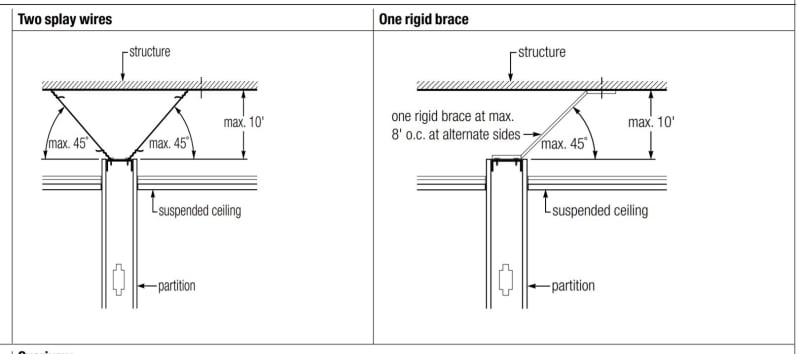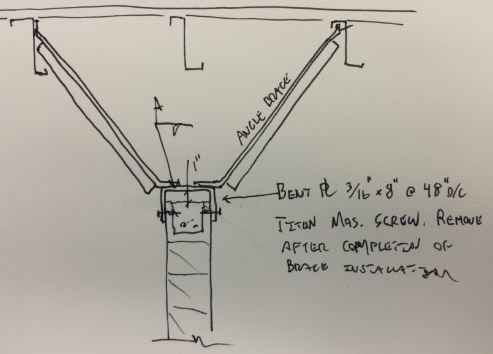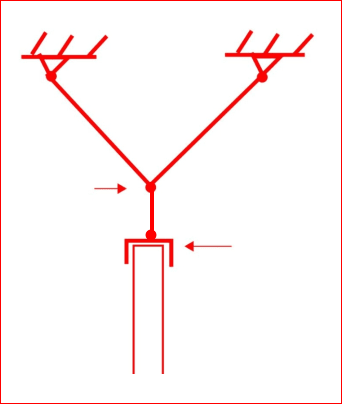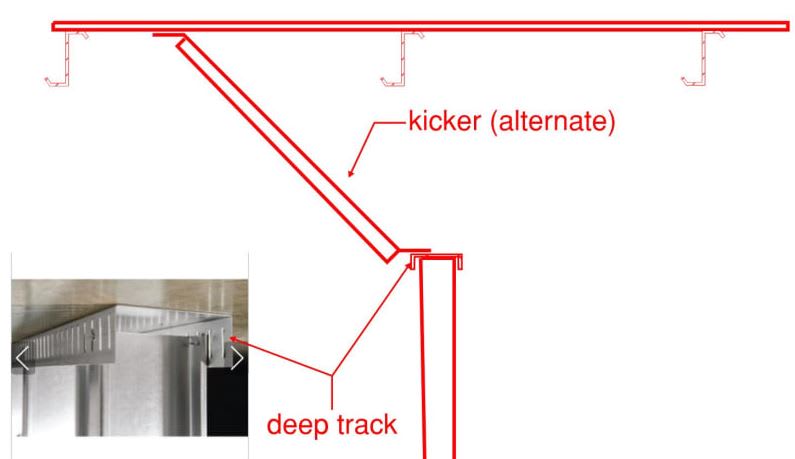I'm curious about how well kick bracing details work for the lateral support of interior partition walls in regards to allowing the roof structure to deflect without imparting a vertical load into the partition walls. I found the first two details shown below through a google search. Based on what I've seen in buildings, I think these types of details are relatively common. Are you concerned about how the brace detail in the one rigid brace doesn't technically allow the roof to slip up or down relative to the top of the wall?

I know there are alternative details when you have a nice smaller run of wall where you can kick near the corner of a wall in plan over to an adjacent perpendicular wall. But let's say you had a long run of wall where the top of wall is 12' and the roof structure above is 20'. Let's say its interior CFS wall studs and a bar joist and metal deck roof. Has anyone come up with a good solution for kicking/bracing the top of this type of wall? I came across this image from KootK from a previous thread for a CMU wall bracing detail. Would people do something like this for a metal stud wall.


I know there are alternative details when you have a nice smaller run of wall where you can kick near the corner of a wall in plan over to an adjacent perpendicular wall. But let's say you had a long run of wall where the top of wall is 12' and the roof structure above is 20'. Let's say its interior CFS wall studs and a bar joist and metal deck roof. Has anyone come up with a good solution for kicking/bracing the top of this type of wall? I came across this image from KootK from a previous thread for a CMU wall bracing detail. Would people do something like this for a metal stud wall.





